Table of Contents
If you’ve recently welcomed a German Shepherd puppy into your home, congratulations! These intelligent and loyal dogs make great companions, but they do require proper training to ensure they become well-behaved members of your family. In this article, we’ll cover everything you need to know about how to train a German Shepherd puppy, from understanding their unique characteristics to teaching them basic and advanced commands.
Before you begin training your German Shepherd puppy, it’s important to understand their temperament and behavior. German Shepherds are known for their intelligence, loyalty, and protective nature, but they can also be stubborn and independent. With the right approach, however, you can establish a strong bond with your puppy and become their trusted leader. In the following sections, we’ll cover the essential training equipment you’ll need, how to create a training environment, and how to establish leadership and a bond with your puppy.
How to Train a German Shepherd Puppy?
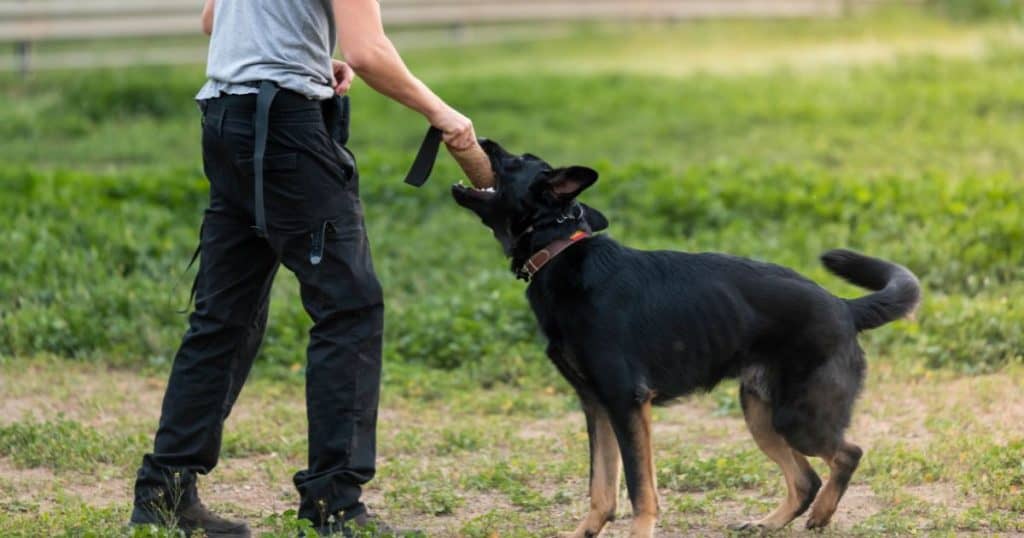
- Understanding your German Shepherd puppy’s temperament is crucial for effective training.
- Proper training equipment and a positive training environment are essential for success.
- Establishing a bond and leadership with your puppy is key to becoming a trusted leader.
Understanding Your German Shepherd Puppy
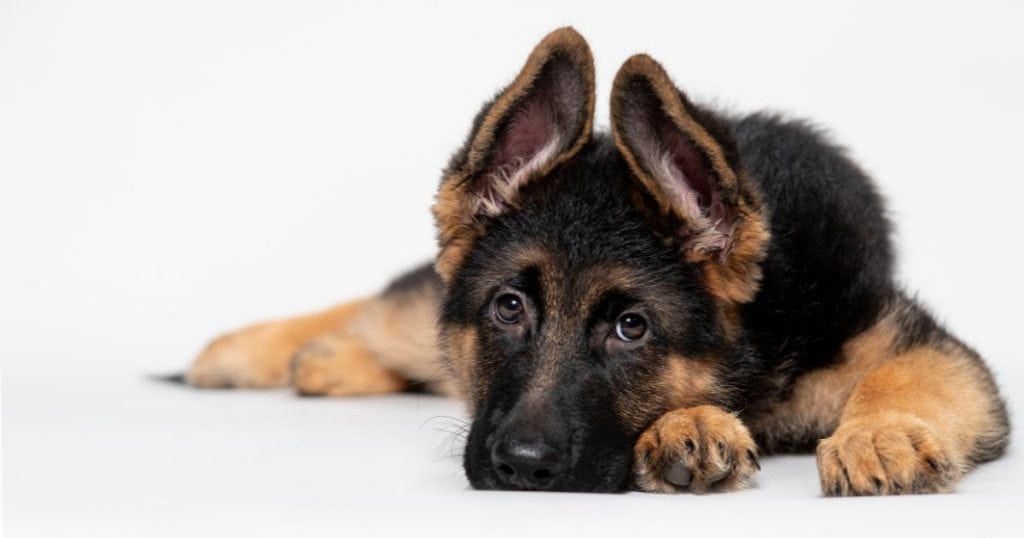
German Shepherds are intelligent, loyal, and sensitive dogs that make great companions. As puppies, they are full of energy and can be a bit mischievous. Understanding their temperament and personality is essential in training them.
German Shepherd puppies are known for their intelligence, which makes them easy to train. However, they can also be sensitive, so it’s important to use positive reinforcement techniques. Harsh training methods can cause them to become fearful or aggressive.
As a breed, German Shepherds have a strong guarding instinct. While this can be beneficial, it’s important not to encourage guarding behavior during training. Overprotectiveness can lead to aggression towards strangers or other animals.
Socialization is crucial for all puppies, but it’s especially important for German Shepherds. They have a critical socialization window that closes at 12 to 16 weeks of life. During this time, they should be exposed to a variety of people, animals, and environments to help them become well-rounded adults.
When training your German Shepherd puppy, it’s important to be patient and consistent. They respond well to positive reinforcement, such as treats and praise. Use clear commands and avoid yelling or using physical punishment.
In summary, understanding your German Shepherd puppy’s temperament and personality is crucial in training them. Use positive reinforcement techniques, avoid encouraging guarding behavior, and prioritize socialization. With patience and consistency, your German Shepherd puppy can become a well-behaved and loyal companion.
Essential Training Equipment

When it comes to training your German Shepherd puppy, having the right equipment can make all the difference. Here are some essential items you should consider investing in:
Collar and Leash
A collar and leash are essential for controlling your puppy during training sessions and when out for walks. Look for a sturdy collar that fits your puppy comfortably and a leash that is long enough to allow your puppy some freedom of movement but not so long that you can’t control them.
Crate
A crate can be a valuable tool for potty training and providing your puppy with a safe space to rest and relax. Look for a crate that is large enough for your puppy to stand up, turn around, and lie down comfortably.
Treats
Treats are an excellent way to motivate your puppy during training sessions. Look for treats that are small, soft, and easy to chew, so your puppy doesn’t get distracted or lose focus.
Toys
Toys are a great way to keep your puppy entertained and engaged during training sessions. Look for toys that are durable, safe, and interactive, such as puzzle toys or toys that require your puppy to work for their reward.
Training Leash
A training leash can be a useful tool for teaching your puppy to walk on a leash without pulling. Look for a leash that is made of sturdy material and has a comfortable handle for you to hold.
By investing in these essential training tools, you’ll be well on your way to successfully training your German Shepherd puppy. Remember to always use positive reinforcement techniques and be patient and consistent with your training efforts.
Creating a Training Environment
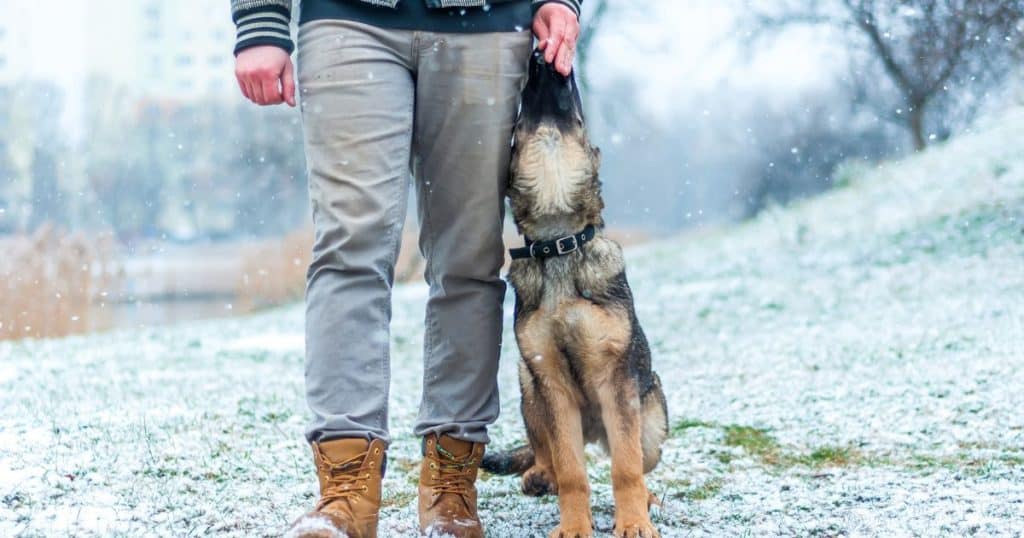
To successfully train a German Shepherd puppy, you need to create a conducive training environment. This means finding different places where you can train your puppy and making sure that they are comfortable in their surroundings. A comfortable puppy is more likely to be receptive to training.
One of the best places to start is in your home. Crate training is a popular method used to help puppies feel safe and secure. You can create a designated area in your home where your puppy can relax and feel comfortable. This area should be free from distractions and noise.
It is also important to expose your puppy to different places and environments. This will help them become comfortable in different situations, which is important for their overall socialization. Take your puppy for walks in different places, such as parks, streets, and other public areas. This will help them get used to different sounds, smells, and sights.
When training your German Shepherd puppy, it is important to use positive reinforcement. This means rewarding good behavior with treats, praise, and affection. You should also be consistent with your training methods and make sure that everyone in your household is on the same page.
In summary, creating a training environment for your German Shepherd puppy involves finding different places to train them, making sure they are comfortable in their surroundings, and using positive reinforcement. With these tips, you can help your puppy become a well-behaved and obedient companion.
Establishing Leadership and Bond
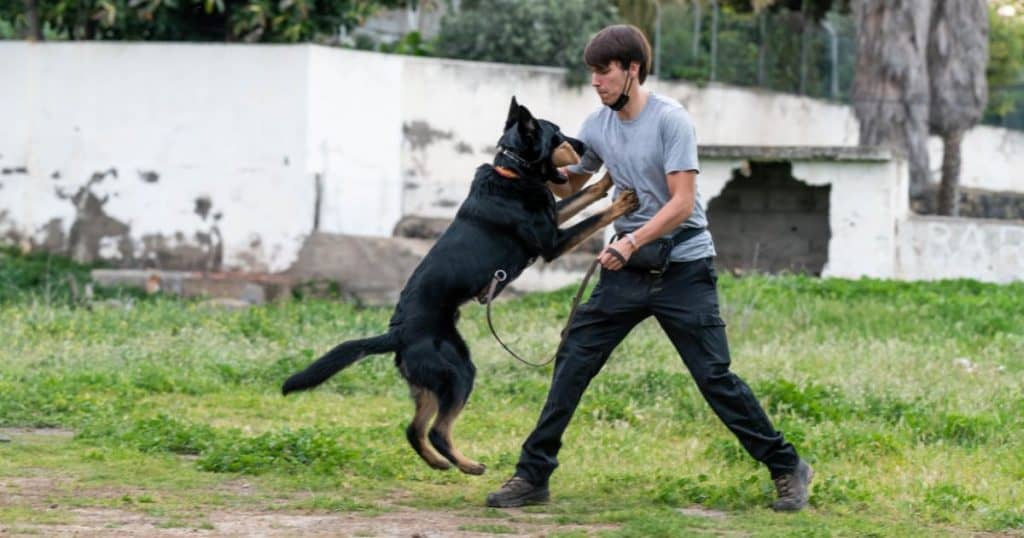
Establishing a strong bond with your German Shepherd puppy is crucial for a healthy and happy relationship. It is essential to establish yourself as the leader of the pack early on in the training process. This will help your puppy understand their place in the family hierarchy, making them more obedient and responsive to your commands.
To establish leadership, you need to be consistent in your training and discipline. Use positive reinforcement, such as treats and praise, to reward good behavior and discourage bad behavior. Consistency is key, so make sure everyone in the household follows the same training techniques.
It is also important to show affection to your puppy to build a strong bond. Spend quality time with your puppy, such as playing, cuddling, and going for walks. This will help your puppy feel loved and secure, which will strengthen your bond.
When training your German Shepherd puppy, it is important to remember that they are intelligent and independent dogs. They need a firm and confident leader to follow. Establishing yourself as the leader of the pack will help your puppy feel secure and confident, making them more responsive to your commands.
In summary, establishing a strong bond and leadership with your German Shepherd puppy is essential for a healthy and happy relationship. Use positive reinforcement, consistency, and affection to build a strong bond and establish yourself as the leader of the pack. With patience and dedication, you can train your German Shepherd puppy to be a well-behaved and obedient companion.
Basic Command Training
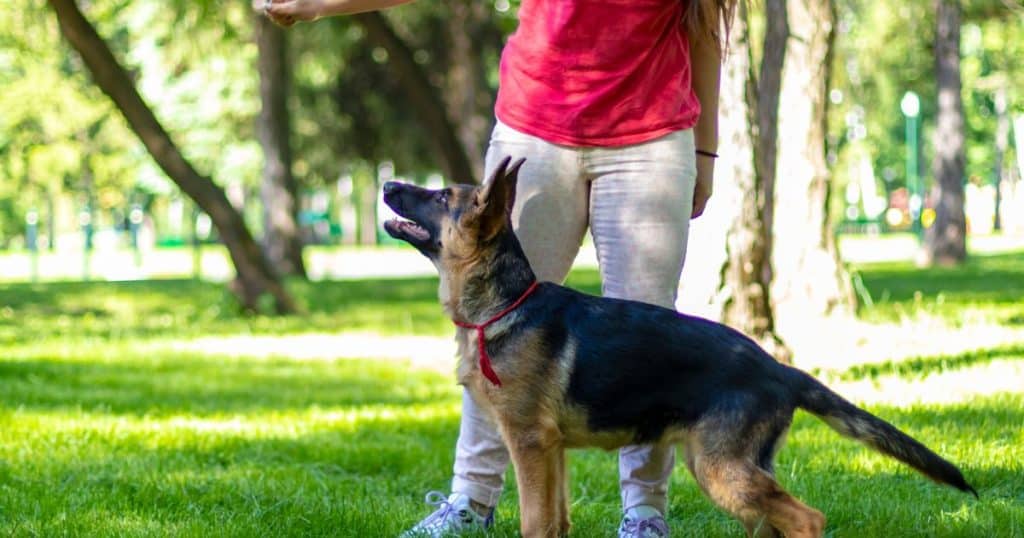
Training your German Shepherd puppy with basic commands is essential for a well-behaved and obedient dog. Basic commands include sit, down, come, no, here, up, stay, stand, off, paw, wait, quiet, rest, go in, and leave it.
To train your puppy, use positive reinforcement and repetition. Start with one command at a time and gradually add more as your puppy learns.
Sit
To teach your puppy to sit, hold a treat above their head and say “Sit.” Your puppy will naturally lower their body to look up at the treat. As soon as their bottom touches the ground, give them the treat and praise them. Repeat this several times a day until your puppy sits on command without the treat.
Down
To teach your puppy to lie down, start with them in a sitting position. Hold a treat in front of their nose and slowly move it towards the ground. As your puppy follows the treat, their body will naturally lower to the ground. Once they are in a lying down position, give them the treat and praise them. Repeat this several times a day until your puppy lies down on command without the treat.
Come
To teach your puppy to come when called, start by saying their name followed by “come.” When they come to you, give them a treat and praise them. Repeat this several times a day, gradually increasing the distance between you and your puppy.
No
To teach your puppy to stop doing something, say “no” in a firm, but not angry, tone. Immediately redirect their attention to something else, such as a toy or treat. Repeat this several times a day until your puppy stops the unwanted behavior on command.
Here
To teach your puppy to come to you, say “here” in a happy tone. When they come to you, give them a treat and praise them. Repeat this several times a day, gradually increasing the distance between you and your puppy.
Up
To teach your puppy to jump up, hold a treat above their head and say “up.” When they jump up to get the treat, give it to them and praise them. Repeat this several times a day until your puppy jumps up on command without the treat.
Stay
To teach your puppy to stay in one place, start by having them sit or lie down. Say “stay” and take a step back. If they stay in place, give them a treat and praise them. Gradually increase the distance between you and your puppy, and the amount of time they stay in place.
Stand
To teach your puppy to stand, start with them in a sitting or lying down position. Say “stand” and gently lift them up by their front legs. As soon as they are standing, give them a treat and praise them. Repeat this several times a day until your puppy stands on command without being lifted.
Off
To teach your puppy to get off something, say “off” in a firm, but not angry, tone. Immediately redirect their attention to something else, such as a toy or treat. Repeat this several times a day until your puppy gets off on command.
Paw
To teach your puppy to give you their paw, say “paw” and gently lift their paw. As soon as they lift their paw, give them a treat and praise them. Repeat this several times a day until your puppy gives you their paw on command without being lifted.
Wait
To teach your puppy to wait, start by having them sit or lie down. Say “wait” and take a step back. If they stay in place, give them a treat and praise them. Gradually increase the distance between you and your puppy, and the amount of time they wait in place.
Quiet
To teach your puppy to stop barking, say “quiet” in a firm, but not angry, tone. Immediately redirect their attention to something else, such as a toy or treat. Repeat this several times a day until your puppy stops barking on command.
Rest
To teach your puppy to rest, say “rest” and gently guide them to a lying down position. As soon as they are lying down, give them a treat and praise them. Repeat this several times a day until your puppy rests on command without being guided.
Go In
To teach your puppy to go into a crate or kennel, say “go in” and gently guide them into the crate or kennel. As soon as they are inside, give them a treat and praise them. Repeat this several times a day until your puppy goes into the crate or kennel on command without being guided.
Leave It
To teach your puppy to leave something alone, say “leave it” in a firm, but not angry, tone. Immediately redirect their attention to something else, such as a toy or treat. Repeat this several times
Advanced Command Training
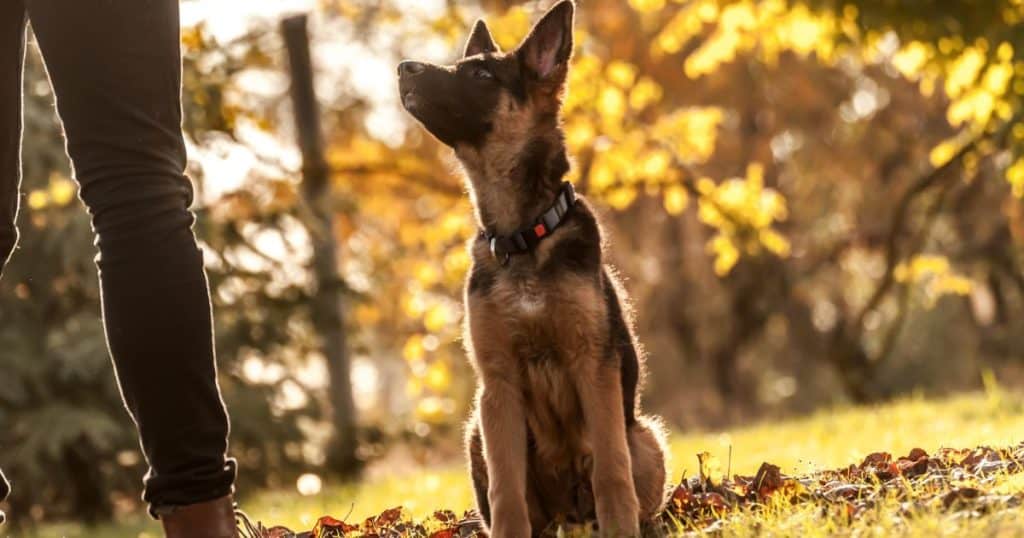
Once your German Shepherd puppy has mastered the basic commands, you can move on to advanced command training. This will help your puppy become a well-trained and obedient adult dog. Here are a few advanced commands that you can teach your German Shepherd puppy:
Speak
Teaching your German Shepherd puppy to speak on command can be a useful tool for many reasons. For example, you can use this command to get your dog to bark if you think someone is breaking into your home. To teach your puppy to speak, wait for them to bark naturally, then say “speak” and reward them with a treat. Repeat this process until your puppy understands that “speak” means to bark on command.
Spin
Teaching your German Shepherd puppy to spin on command is a fun trick that can also be useful. For example, you can use this command to get your dog to turn around if they are about to run into something. To teach your puppy to spin, hold a treat in front of their nose and move it in a circular motion. As your puppy follows the treat, say “spin” and reward them with the treat. Repeat this process until your puppy understands that “spin” means to turn in a circle on command.
Remember, advanced command training takes time and patience. Always reward your puppy with treats and praise when they perform the desired behavior correctly. With consistent training, your German Shepherd puppy will become a well-trained and obedient adult dog.
Socialization and Exposure Training
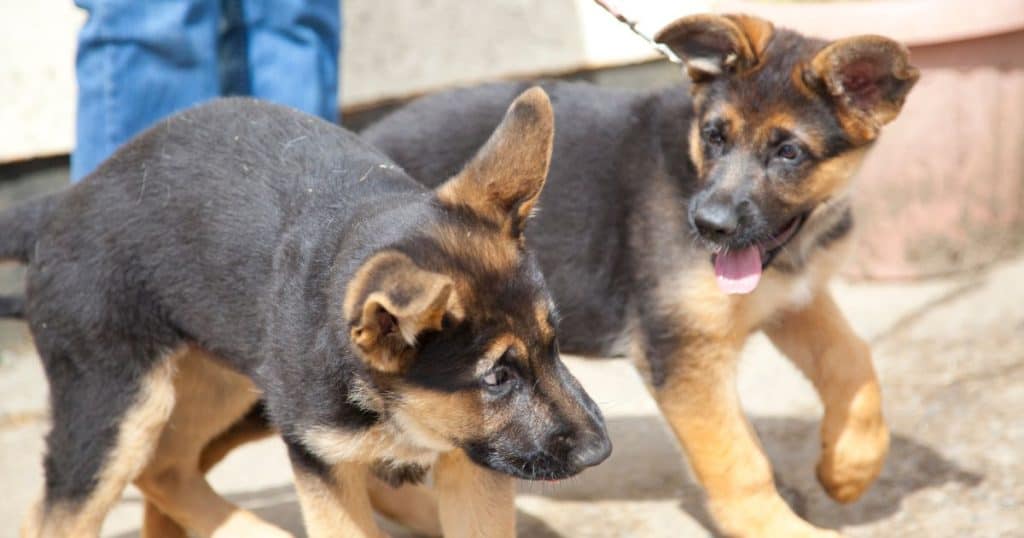
Socialization and exposure training are crucial for a German Shepherd puppy’s development. This training helps the puppy become comfortable around people, animals, sights, sounds, and different volumes. Proper socialization and exposure training can prevent fear and aggression in adult German Shepherds.
To socialize your German Shepherd puppy, you should expose them to as many different people, animals, and environments as possible. This exposure should start as early as possible, preferably before the puppy reaches 16 weeks of age. You can take your puppy to different places such as parks, beaches, and pet stores to expose them to new sights, sounds, and smells.
It is also essential to expose your puppy to different animals, including other dogs, cats, and small animals such as rabbits. This exposure can help your puppy learn how to interact appropriately with other animals and prevent aggression toward them in the future.
In addition to socialization, exposure training can help your German Shepherd puppy become comfortable with different sounds and volumes. Expose your puppy to different sounds such as traffic, construction, and fireworks to prevent fear and anxiety in the future. You can also expose your puppy to different volumes by gradually increasing the volume of sounds such as music and television.
Overall, socialization and exposure training are essential for your German Shepherd puppy’s development. By exposing your puppy to different people, animals, environments, sights, sounds, and volumes, you can help them become a well-adjusted adult dog.
Behavioral Training
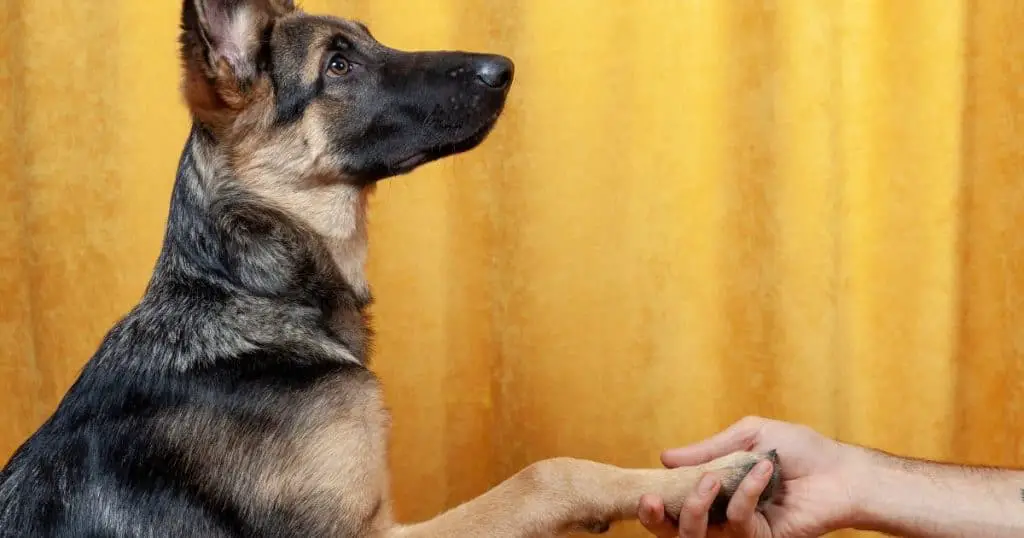
Behavioral training is an essential aspect of German Shepherd puppy training. It involves teaching your puppy how to behave appropriately in different situations and environments. This type of training is crucial to prevent behavioral issues such as jumping, barking, and aggression. In this section, we will discuss some of the most common behavioral issues and how to address them.
Jumping
Jumping is a common issue among German Shepherd puppies. It is their way of showing affection and excitement. However, it can be dangerous, especially when your puppy jumps on children or elderly people. To stop your puppy from jumping, you need to teach them the “off” command. Whenever your puppy jumps, turn your back and say “off.” Wait until your puppy calms down and then reward them with a treat or praise.
Barking
Barking is another common issue among German Shepherd puppies. It can be frustrating, especially when your puppy barks excessively. To stop your puppy from barking, you need to teach them the “quiet” command. Whenever your puppy barks, say “quiet” and wait until they stop barking. Reward them with a treat or praise.
Aggressive Behavior
German Shepherds are known for their protective nature, which can sometimes lead to aggressive behavior. To prevent aggressive behavior, you need to teach your puppy impulse control. Start by teaching them the “sit” and “stay” commands. Once they have mastered these commands, you can move on to more advanced commands such as “leave it” and “drop it.” These commands will teach your puppy to control their impulses and prevent them from becoming aggressive.
Separation Anxiety
Separation anxiety is a common issue among German Shepherd puppies. It occurs when your puppy becomes anxious or distressed when left alone. To prevent separation anxiety, you need to teach your puppy to be independent. Start by leaving your puppy alone for short periods and gradually increase the time. Provide your puppy with toys and treats to keep them occupied while you are away.
In conclusion, behavioral training is an essential aspect of German Shepherd puppy training. It involves teaching your puppy how to behave appropriately in different situations and environments. By addressing common behavioral issues such as jumping, barking, aggression, and separation anxiety, you can ensure that your puppy grows up to be a well-behaved and obedient dog.
Positive Reinforcement Techniques
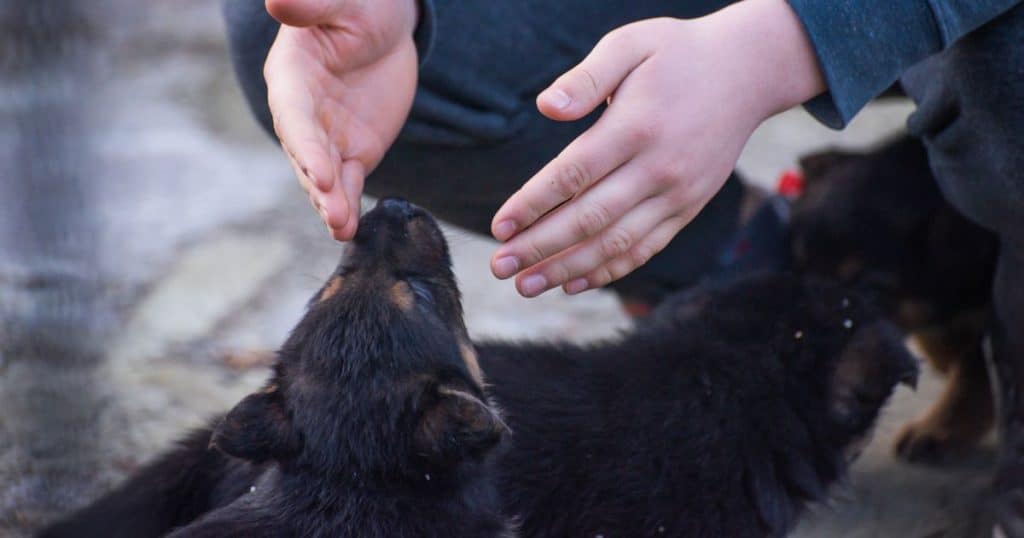
Positive reinforcement is a training technique that involves rewarding good behavior in your German Shepherd puppy. This method of training is based on the idea that dogs are more likely to repeat a behavior that is followed by a positive outcome. Positive reinforcement techniques focus on rewarding your puppy for doing something right, rather than punishing them for doing something wrong.
The most common rewards used in positive reinforcement training are treats, toys, and praise. When your puppy does something you want them to do, such as sitting or staying, you can reward them with a treat or toy. This will help your puppy associate the behavior with a positive outcome and encourage them to repeat the behavior in the future.
It is important to note that rewards should be given immediately after the behavior occurs, so your puppy can make the connection between the behavior and the reward. You should also use a consistent reward for a specific behavior, so your puppy knows what to expect.
Positive reinforcement techniques are a great way to build a strong bond with your German Shepherd puppy. By rewarding good behavior, you are teaching your puppy that good things happen when they do what you want them to do. This can help build trust and strengthen your relationship with your puppy.
Positive reinforcement training can also be used to teach your puppy new behaviors. By breaking down a behavior into small steps and rewarding your puppy for each step, you can teach them a new behavior in a positive and rewarding way.
Overall, positive reinforcement techniques are a great way to train your German Shepherd puppy. By rewarding good behavior, you can build a strong bond with your puppy and teach them new behaviors in a positive and rewarding way.
Exercise and Mental Stimulation
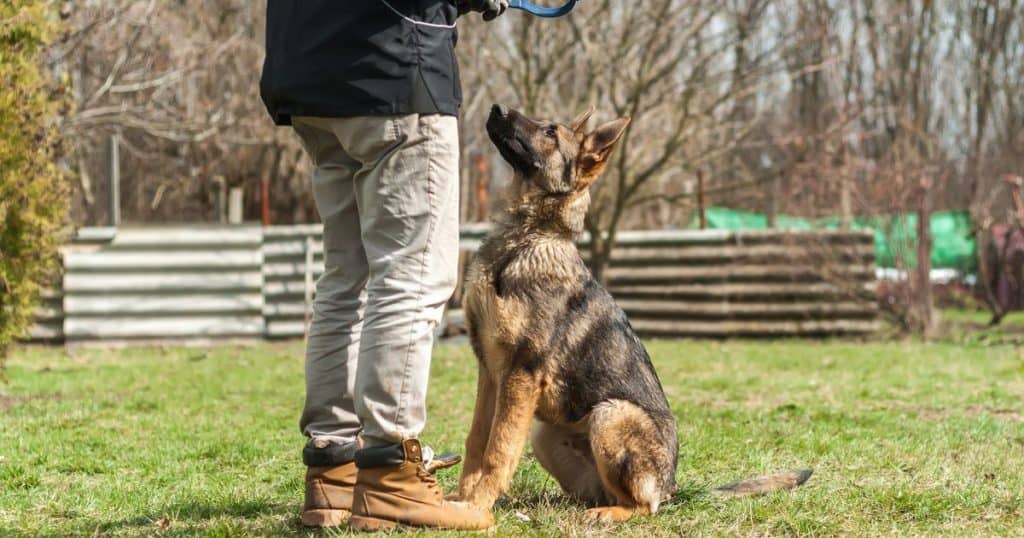
One of the most important aspects of training a German Shepherd puppy is providing them with enough exercise and mental stimulation. These intelligent and active dogs require both physical and mental activities to stay happy and healthy.
For physical exercise, daily walks, runs, or hikes are essential. German Shepherds have a lot of energy, so it’s important to make sure they get enough exercise to prevent boredom and destructive behavior. It’s also important to vary their exercise routine to prevent them from getting bored with the same old routine.
In addition to physical exercise, mental stimulation is just as important for a German Shepherd’s overall well-being. Mental stimulation can come in many forms, including puzzle toys, nose work games, and obedience training. These activities help to challenge your dog’s mind and keep them engaged and entertained.
Puzzle toys are a great way to provide mental stimulation for your German Shepherd puppy. These toys are designed to challenge your dog’s problem-solving skills and keep them entertained for hours. There are many different types of puzzle toys available, including treat-dispensing toys and interactive games.
Nose work games are another great way to provide mental stimulation for your German Shepherd puppy. These games involve hiding treats or toys around the house or yard and letting your dog use their sense of smell to find them. German Shepherds have an incredible sense of smell, so they excel at these types of games.
Obedience training is also an important part of mental stimulation for your German Shepherd puppy. Teaching your dog basic commands like sit, stay, and come can help to challenge their mind and provide a sense of accomplishment. It’s important to make training sessions fun and rewarding for your dog to keep them engaged and motivated.
Overall, providing your German Shepherd puppy with enough exercise and mental stimulation is crucial for their physical and mental well-being. By varying their exercise routine and incorporating puzzle toys, nose work games, and obedience training, you can help keep your puppy happy, healthy, and entertained.
Potty Training Your Puppy
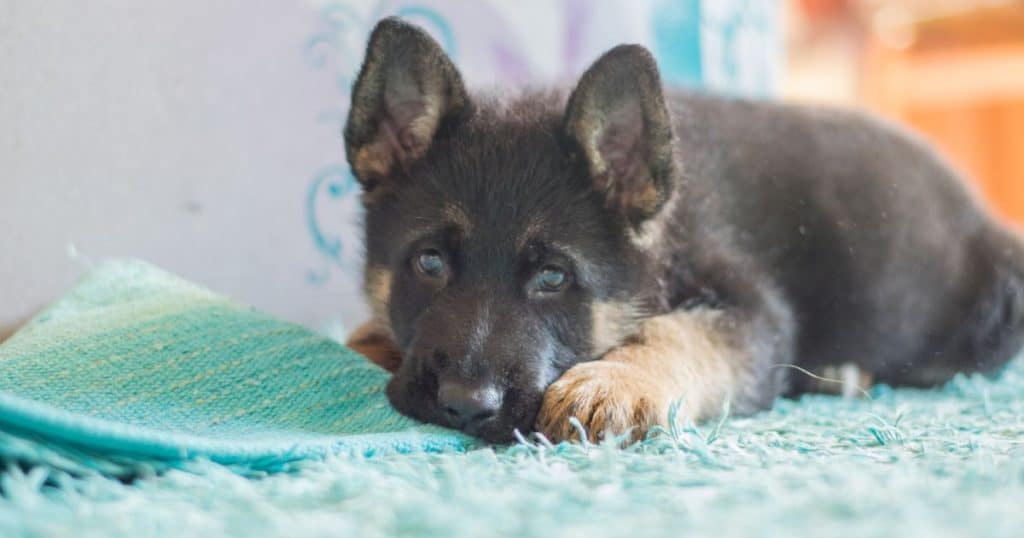
Potty training your German Shepherd puppy is an essential part of their training and development. It can be a challenging process, but with patience and consistency, you can successfully train your puppy to go potty outside.
Establish a Routine
The first step in potty training your puppy is to establish a routine. Take your puppy outside to go potty at regular intervals throughout the day, such as after meals, naps, and playtime. Consistency is key, so try to stick to the same schedule every day.
Use Positive Reinforcement
When your puppy goes potty outside, be sure to praise them and give them a treat. Positive reinforcement is an effective way to encourage your puppy to repeat good behavior.
Supervise Your Puppy
When you’re not able to supervise your puppy, keep them in a crate or confined to a small area. This will help prevent accidents inside the house and teach your puppy to hold their bladder.
Watch for Signs
Watch for signs that your puppy needs to go potty, such as sniffing around or circling. When you see these signs, take your puppy outside immediately.
Clean Up Accidents
If your puppy has an accident inside, clean it up immediately with an enzymatic cleaner. This will help eliminate the odor and prevent your puppy from going potty in the same spot again.
Be Patient
Potty training your puppy takes time and patience. Don’t get frustrated if your puppy has accidents or doesn’t seem to be making progress. Keep working with them, and eventually, they’ll learn to go potty outside.
By following these tips, you can successfully potty train your German Shepherd puppy. Remember to be patient and consistent, and always use positive reinforcement to encourage good behavior.
Grooming and Health Care Tips
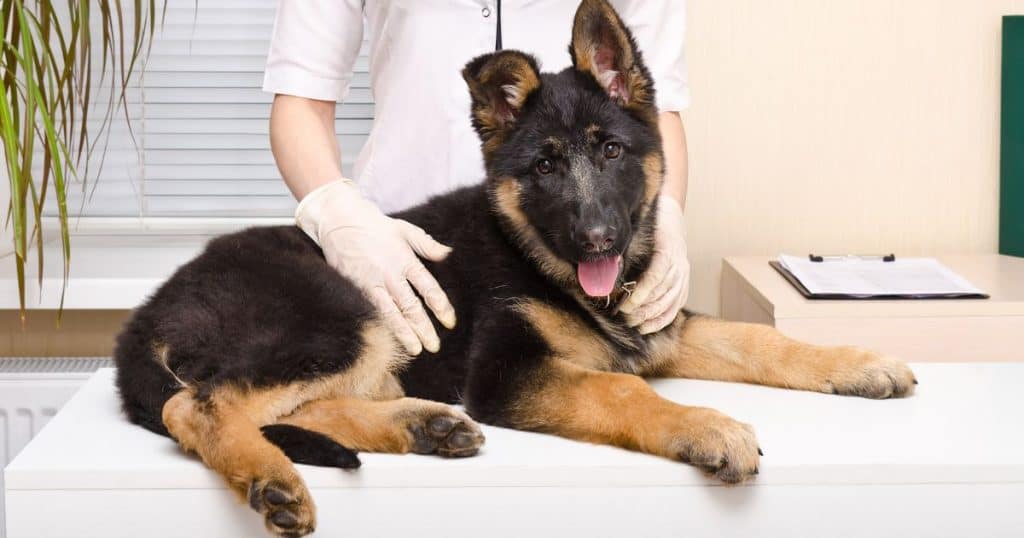
Taking care of your German Shepherd puppy’s grooming and health care is an essential part of ensuring their overall well-being. Here are some tips to help you keep your puppy healthy and happy:
Grooming
German Shepherds have a double coat, which means they shed quite a bit. To keep their coat healthy and clean, you should brush them regularly. Use a Furminator or similar de-shedding tool to reach the undercoat and remove loose hair effectively.
Bathing your puppy too often can strip their coat of natural oils, so it’s best to limit it to once every three months. When you do bathe them, make sure to use a gentle shampoo made specifically for dogs.
Trimming your puppy’s nails is also important. Long nails can cause discomfort and make it difficult for them to walk. You can use a nail clipper or a grinder to do this, but be careful not to cut too close to the quick, which can cause bleeding.
Health Care
Maintaining your puppy’s health is crucial to their well-being. Here are some tips to help you keep them healthy:
- Maintain a healthy weight: German Shepherds should look substantial and not spindly, giving the impression of muscular fitness and endurance. Feeding them a balanced diet and providing regular exercise will help them stay healthy and maintain an ideal weight.
- Vaccinations: Puppies require a series of vaccinations to protect them from various diseases. Consult with your veterinarian to determine the appropriate vaccination schedule for your puppy.
- Hazards: German Shepherds are prone to several health issues, including hip dysplasia and bloat. Make sure to keep your puppy away from hazardous substances, such as cleaning products and toxic plants.
By following these grooming and healthcare tips, you can help ensure that your German Shepherd puppy grows up to be a healthy and happy adult dog.
Dealing with Potential Challenges
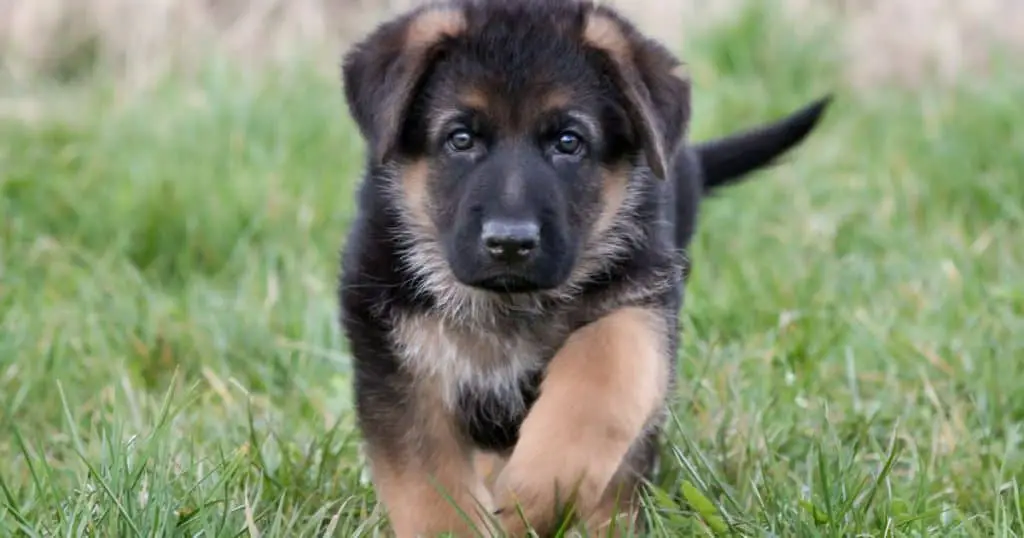
Training a German Shepherd puppy can be a rewarding experience, but it can also come with its share of challenges. Here are some potential difficulties you may face and how to handle them:
Patience is Key
German Shepherds are intelligent dogs, but they can also be stubborn. It’s important to be patient when training your puppy. Don’t expect them to learn everything overnight, and don’t get frustrated if they don’t seem to be making progress as quickly as you’d like. Consistency and patience are key when it comes to training a German Shepherd.
Dealing with a Stressed or Anxious Puppy
Some German Shepherd puppies may be prone to anxiety or stress. This can be due to a variety of factors, such as genetics, past experiences, or lack of socialization. If your puppy seems anxious or stressed, it’s important to address the issue right away.
One way to help your puppy feel more comfortable is to create a safe and calm environment. Make sure they have a quiet and comfortable place to rest, and avoid loud noises or sudden movements that could startle them. You can also try using calming aids, such as pheromone sprays or supplements, to help your puppy relax.
Avoiding Negative Reinforcement
Negative reinforcement can be counterproductive when it comes to training a German Shepherd puppy. Yelling or hitting your puppy can cause them to become fearful or aggressive, which can make training even more difficult. Instead, focus on positive reinforcement techniques, such as treats and praise, to encourage good behavior.
It’s also important to avoid punishing your puppy for mistakes. Instead, redirect their attention to a more appropriate behavior and reward them when they get it right. This will help your puppy learn what behaviors are expected of them without causing unnecessary stress or fear.
By being patient, creating a safe environment, and using positive reinforcement techniques, you can overcome potential challenges when training your German Shepherd puppy. Remember to stay consistent and avoid negative reinforcement, and you’ll be on your way to having a well-trained and happy puppy.
Training for Specific Roles
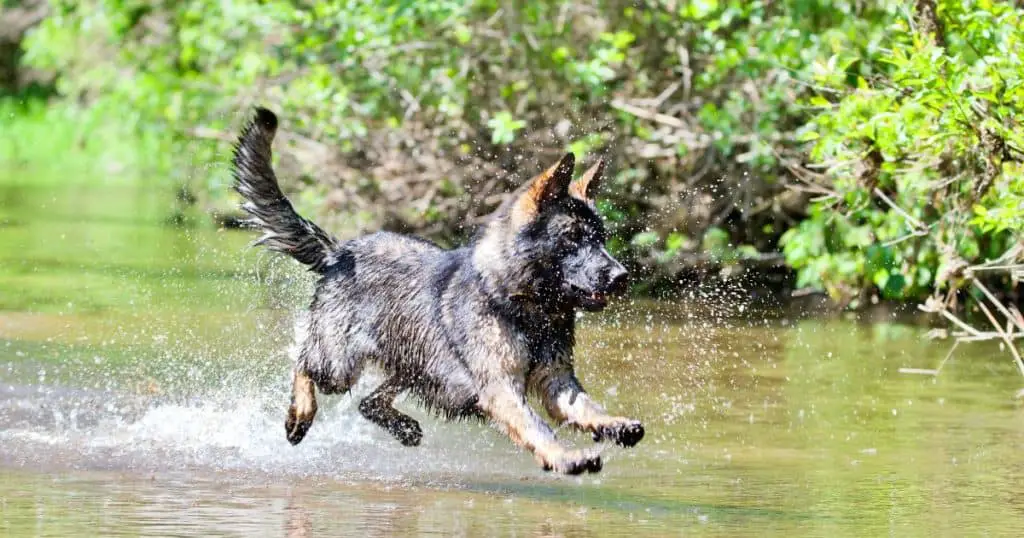
German Shepherds are versatile dogs that can perform a variety of roles, including working as a police or military dog, tracking, protection, and agility. Training a German Shepherd puppy for specific roles requires a combination of socialization, obedience training, and specialized training.
Working Dog
German Shepherds are known for their intelligence, loyalty, and work ethic, which makes them ideal for working roles. To train a German Shepherd puppy to become a working dog, start with basic obedience training, such as sit, stay, and come. Once your puppy has mastered these commands, move on to more advanced training, such as tracking, scent detection, and bite work.
Tracking
German Shepherds are natural trackers and can be trained to track people, animals, and objects. To train a German Shepherd puppy for tracking, start by introducing them to a scent and rewarding them for following it. Gradually increase the difficulty of the scent trail and reward your puppy for successfully tracking the scent.
Protection
German Shepherds are also excellent protection dogs and can be trained to protect their owners and property. To train a German Shepherd puppy for protection, start with obedience training and socialization. Once your puppy has mastered basic obedience, move on to specialized training, such as bite work and attack training.
Agility
German Shepherds are agile dogs that excel in agility competitions. To train a German Shepherd puppy for agility, start with basic obedience training and socialization. Once your puppy has mastered basic obedience, introduce them to agility equipment, such as jumps, tunnels, and weave poles. Reward your puppy for successfully completing each obstacle and gradually increase the difficulty of the course.
In conclusion, training a German Shepherd puppy for specific roles requires a combination of socialization, obedience training, and specialized training. Whether you want your puppy to become a working dog, tracker, protector, or agility competitor, start with basic obedience training and gradually introduce more advanced training as your puppy progresses. With patience, consistency, and positive reinforcement, your German Shepherd puppy can become a well-trained and versatile dog.
Before You Go
Training your German Shepherd puppy can be a fun and rewarding experience for both you and your furry friend. With patience, consistency, and a keen understanding of their unique temperament, you can lay the foundation for a well-behaved, confident, and sociable adult dog.
Remember, socialization is key, and it should begin as early as possible. Expose your puppy to different people, animals, and environments to help them develop into a well-rounded dog. Positive reinforcement training is also highly effective, so be sure to reward good behavior with treats, praise, and playtime.
When it comes to training, consistency is key. Set clear boundaries and expectations for your puppy and stick to them. Use your voice as your most powerful training tool, and be sure to communicate your expectations clearly and effectively.
Keep in mind that German Shepherds are intelligent and easy to train, but they also have a high guarding instinct. Avoid encouraging guarding behavior during training, as this could lead them to become overprotective.
In conclusion, training a German Shepherd puppy requires time, effort, and a lot of love. But with the right approach, you can help your furry friend become a well-behaved and loyal companion for years to come.
FAQs
What is the best age to start training a German Shepherd puppy?
The best age to start training your German Shepherd puppy is between 8 and 12 weeks. This is the period when your puppy is most receptive to new experiences and learning. It’s important to start with basic commands like sit, stay, come, and down. As your puppy gets older, you can introduce more advanced training techniques.
How do you discipline a German Shepherd puppy?
Disciplining your German Shepherd puppy requires consistency and patience. Positive reinforcement is the best way to train your puppy. Reward your puppy for good behavior and ignore bad behavior. If your puppy misbehaves, redirect their attention to something else. Never hit or yell at your puppy as this can harm your relationship and cause fear.
What are some effective training methods for German Shepherd puppies?
Effective training methods for German Shepherd puppies include positive reinforcement, clicker training, and crate training. Positive reinforcement involves rewarding your puppy for good behavior. Clicker training uses a clicker to mark the desired behavior, followed by a reward. Crate training involves using a crate to create a safe and comfortable space for your puppy.
Can German Shepherd puppies be trained to be friendly?
Yes, German Shepherd puppies can be trained to be friendly. Socialization is an important part of training your puppy to be friendly. Introduce your puppy to new people, animals, and environments. Reward your puppy for friendly behavior and ignore aggressive behavior. With consistent training, your German Shepherd puppy can become a friendly and well-behaved companion.
How can you train a German Shepherd puppy to protect you?
Training your German Shepherd puppy to protect you requires professional training and should only be done by experienced trainers. Protection training involves teaching your puppy to recognize threats and respond accordingly. It’s important to remember that protection training can be dangerous and should only be done under the guidance of a professional trainer.
Is it easy to train German Shepherd puppies?
German Shepherd puppies are intelligent and eager to please, which makes them relatively easy to train. However, training requires consistency, patience, and dedication. It’s important to start training early and use positive reinforcement techniques. With consistent training, your German Shepherd puppy can become a well-behaved and obedient companion.

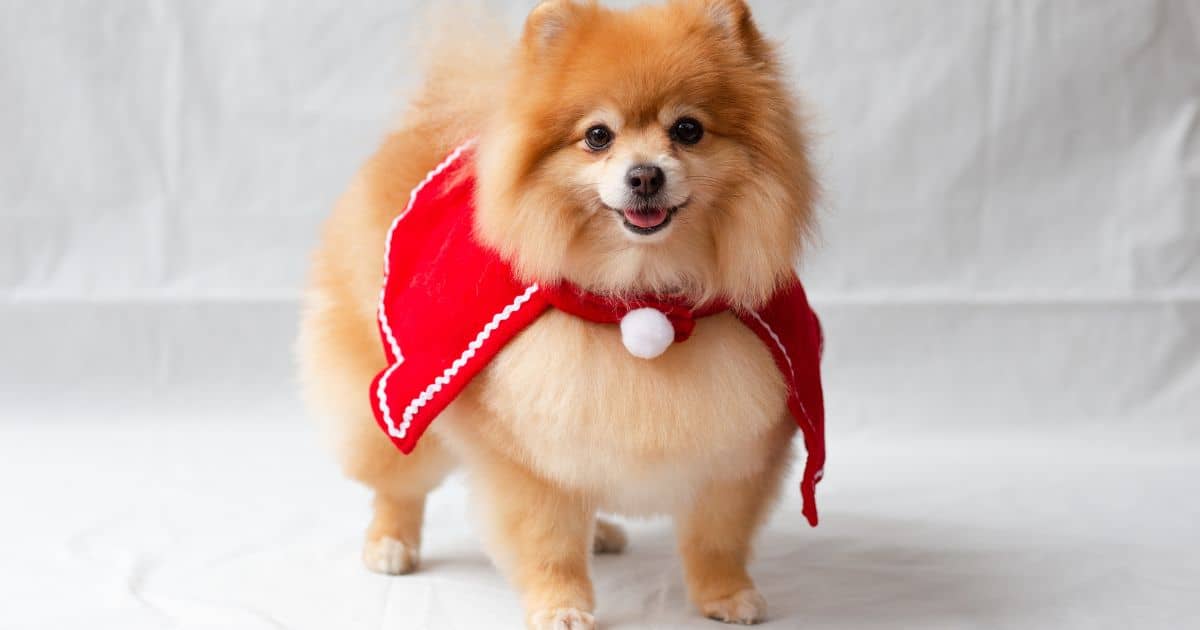
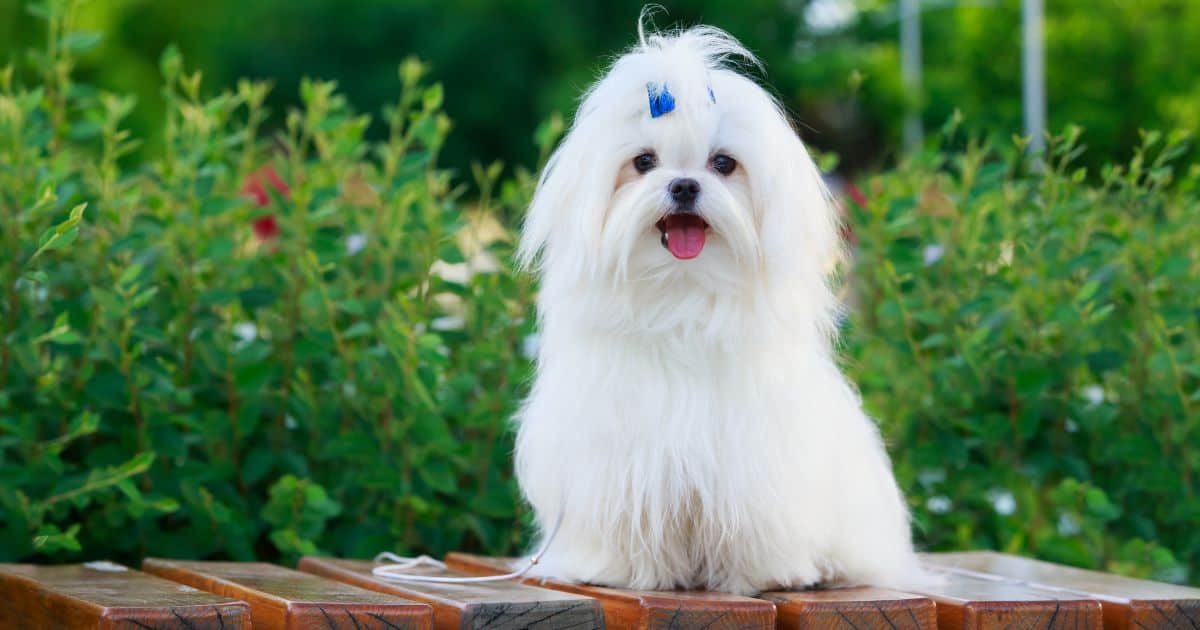
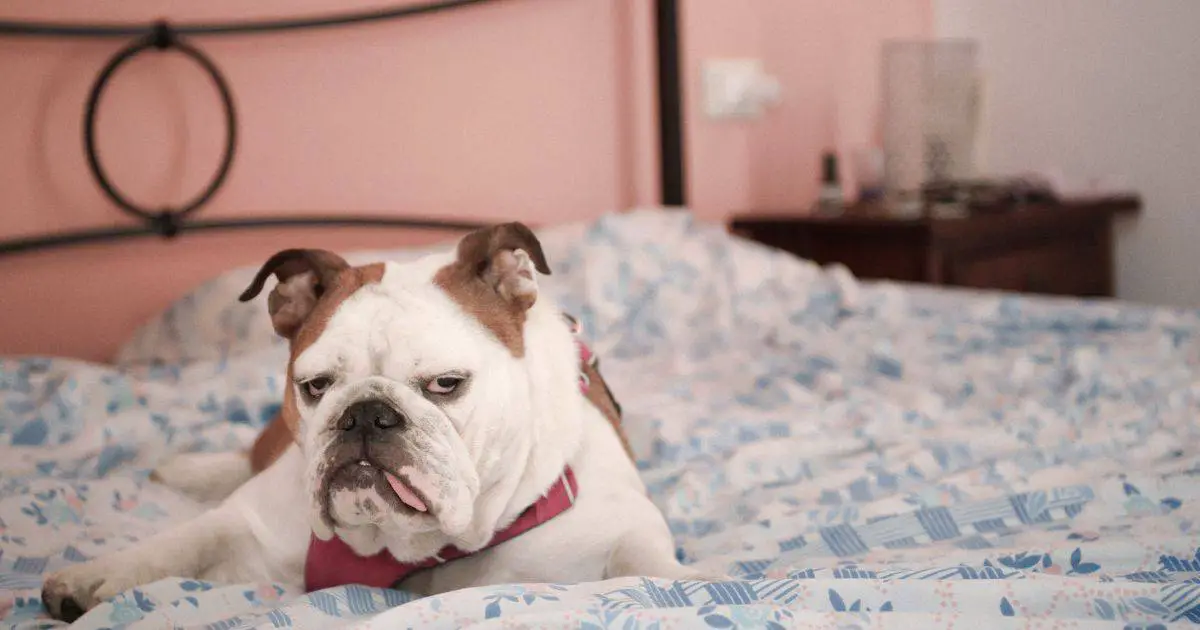
Leave a Reply
You must be logged in to post a comment.